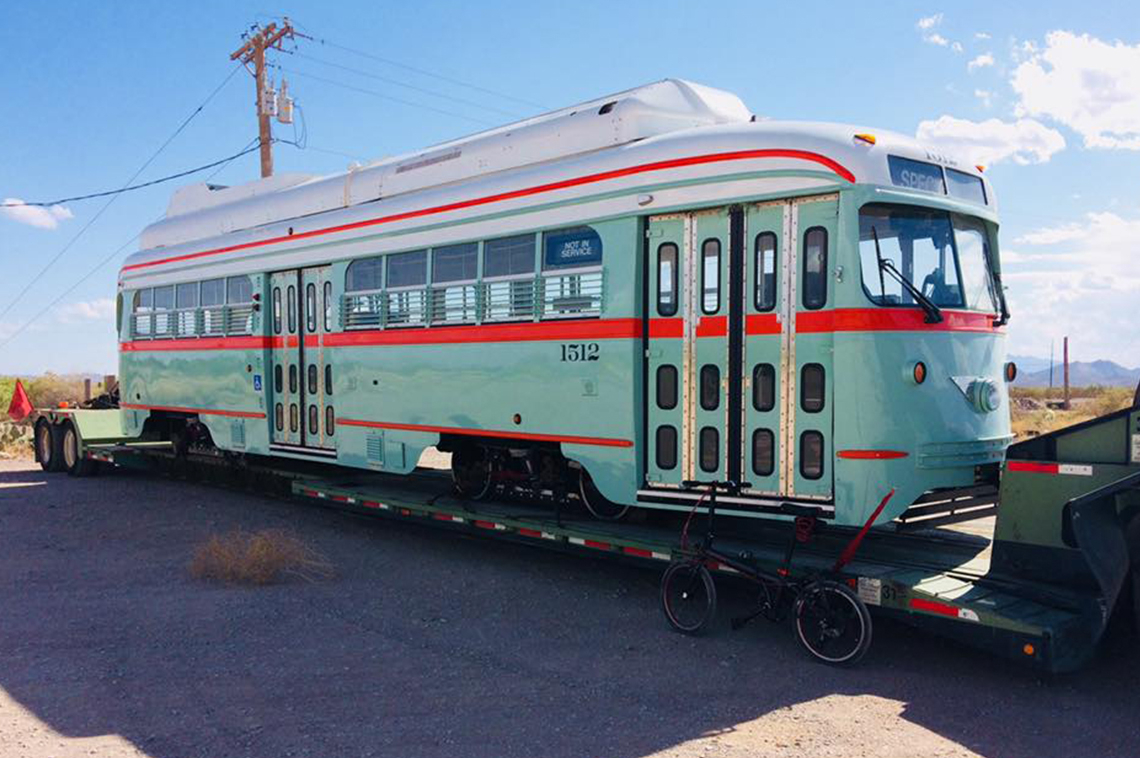
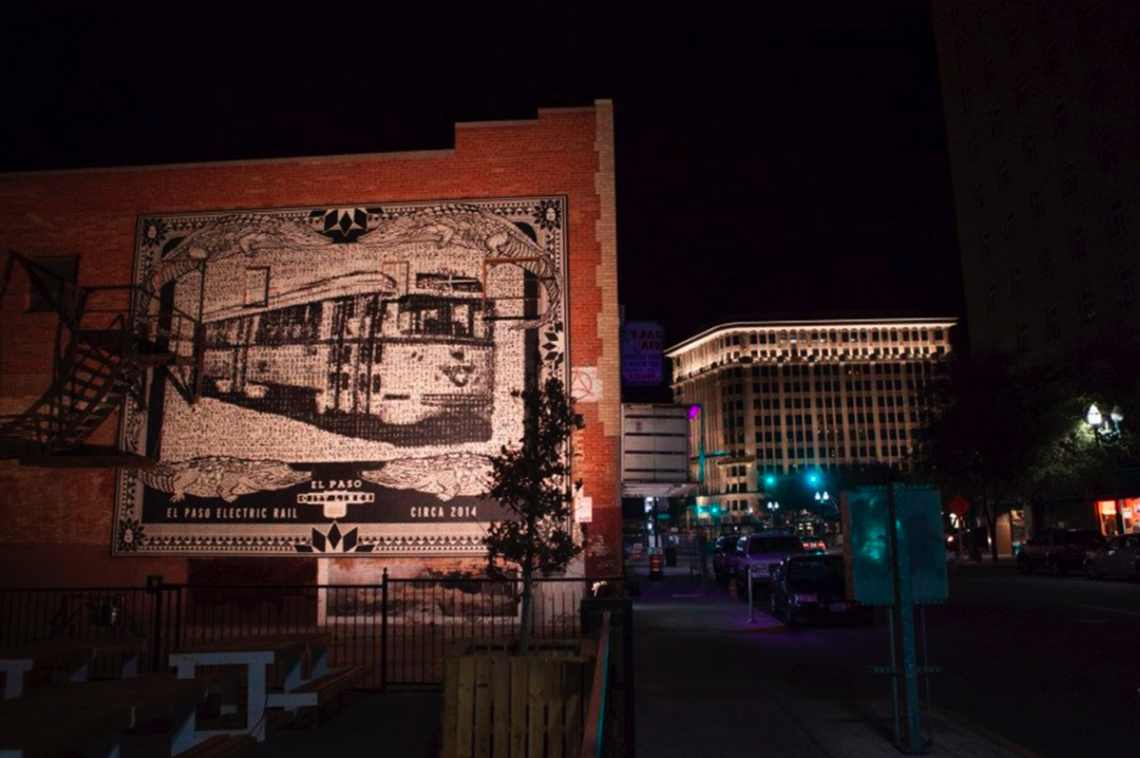
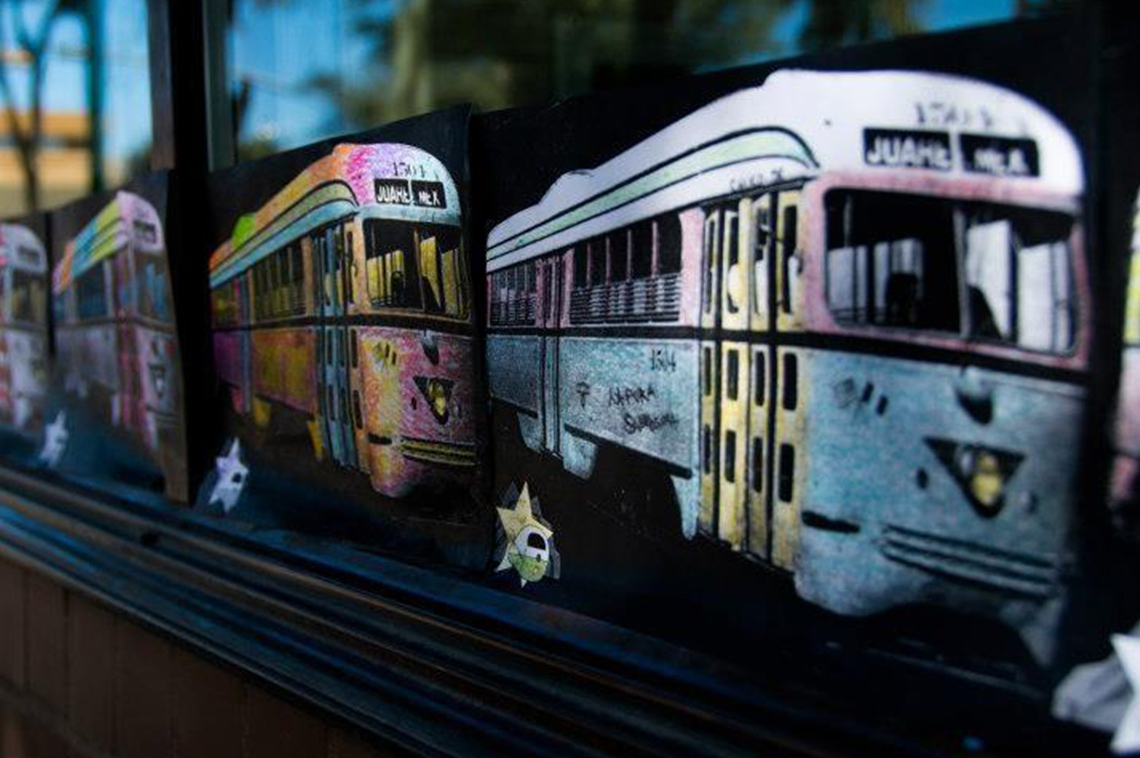
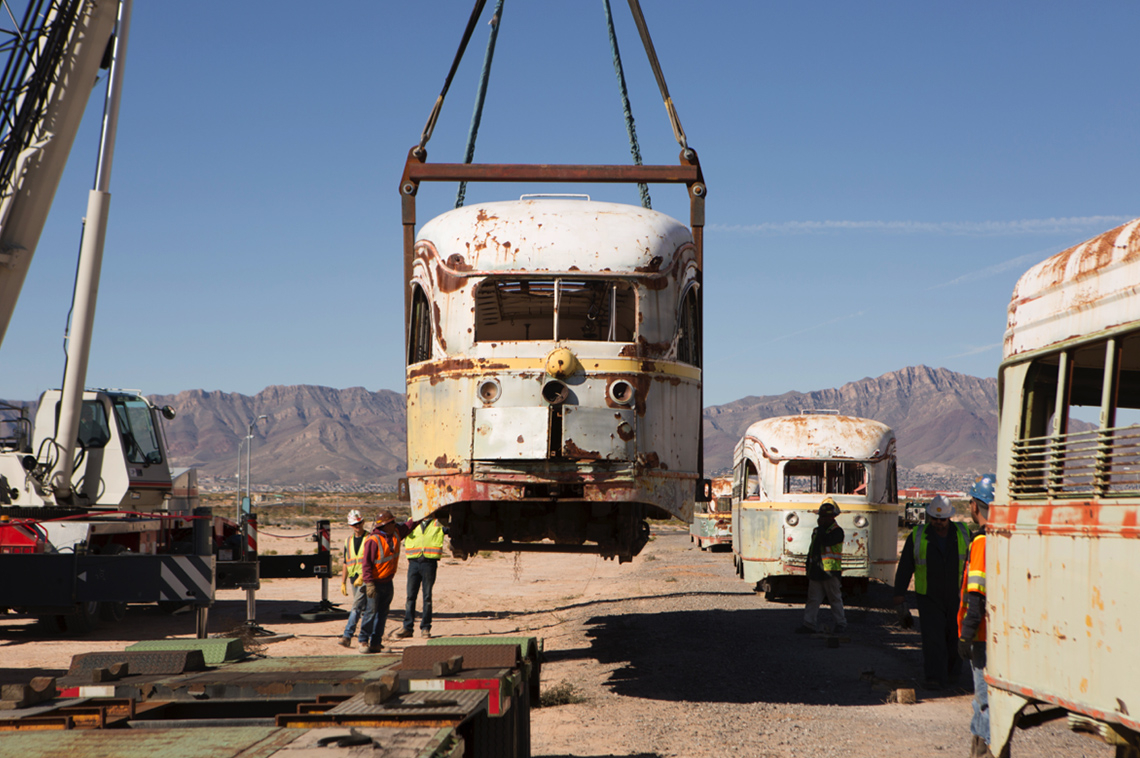
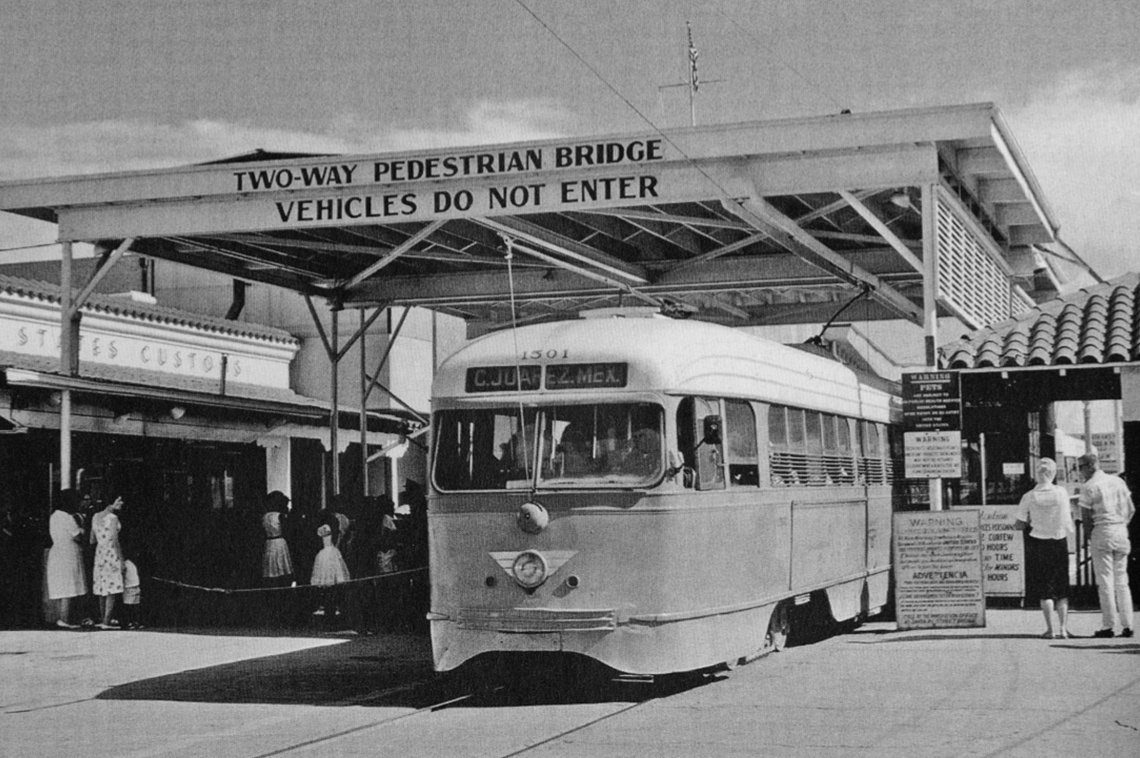
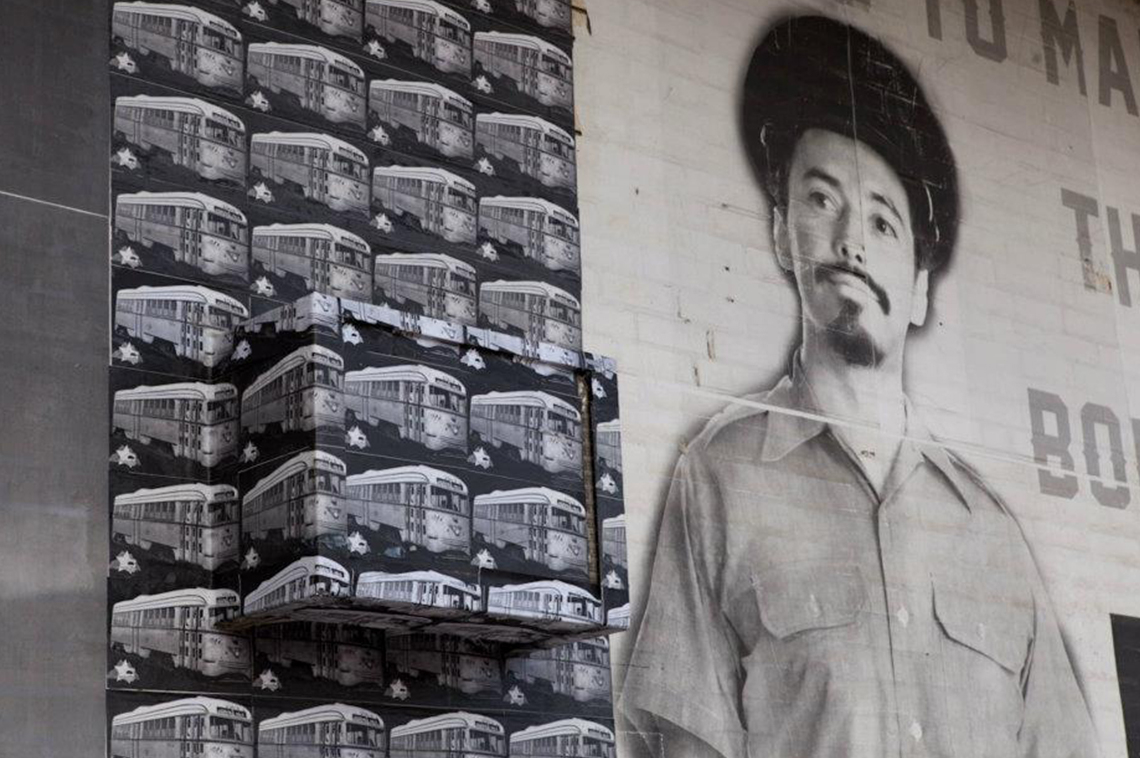
What began as a sort of arts-driven guerilla marketing campaign for the fictional return of a historic streetcar in the border communities of El Paso, TX and Ciudad Juárez, Mexico, ended in an artist getting elected to government office and demonstrating of the power of art to capture the imagination of a community. Sometimes you just have to help people see what's possible, before they can believe in it.
Unlike San Diego, CA and Tijuana, Mexico, which are separated by 20 miles, El Paso, TX and Ciudad Juárez, Mexico sit immediately adjacent to one another, separated only by the width of the Rio Grande River and the international border between the United States and Mexico. For generations, residents on both sides of the border have crossed frequently for work, school, recreation, and to visit family; more than 80 percent of El Pasoans identify as Latinx.
Until it was closed down in 1974, these border crossings were facilitated in part by an international streetcar system that connected the downtowns of both cities. As in many American cities, the streetcar system ran President’s Conference Committee (PCC) streetcars, with a sleek Art Deco design that was introduced after the Great Depression to lure new car owners back onto public transportation.
The iconic streetcars and stories of their transnational past served as the inspiration for Peter Svarzbein’s Masters of Fine Arts thesis project at New York’s School for Visual Arts. In 2012 Mr. Svarzbein, a native of El Paso, created the El Paso Transnational Trolley, which could be described as part performance art, part guerrilla marketing, part visual art installation, and part fake advertising campaign. The project began with a series of wheatpaste posters advertising the return of the El Paso-Juárez streetcar, and continued with the deployment of Alex the Trolley Conductor, a new mascot and spokesperson for the alleged new service. Alex appeared at Comic Cons, public parks, conferences, and other public spaces to promote the return of the streetcar, while additional advertisements appeared across El Paso, sparking curiosity and excitement for the assumed real project.
Eventually, Svarzbein admitted that the project was a graduate thesis masquerading as a streetcar launch, but rather than graduating and moving on, he decided to move back home to El Paso. When he learned that the City of El Paso planned to sell the historic PCC streetcars, he lobbied the city to cancel the sale, and instead return the streetcars to the streets of El Paso. Thanks to the region’s dry climate, the streetcars have remained in relatively good shape for the past four decades even though they’ve been stored in the open desert at the edge of El Paso. After gathering thousands of signatures in support of the project and with the strong backing of the City of El Paso and Texas Department of Transportation (TxDOT) Commissioner Ted Haughton, the El Paso trolley won a $97 million grant from TxDOT.
Now, the first of six refurbished El Paso PCCs have arrived, where they will re-enter service on a new trolley line that will stay on the American side of the Rio Grande. The cars will be painted in three different color schemes used on El Paso trolleys from the 1950s through the end of service. The remaining five rebuilt cars will be delivered over the course of this year.
There is no doubt that it was Svarzbein’s approach as an artist that transformed the discussion. The project’s website quotes artist Guillermo Goméz-Peña: “An artist thinks differently, imagines a better world, and tries to render it in surprising ways. And this becomes a way for his/her audiences to experience the possibilities of freedom that they can’t find in reality.”
Svarzbein credits his creative campaign with helping to get the project off the ground and building the community support needed to win funding, claiming that “there is a sort of responsibility that artists have to imagine and speak about a future that may not be able to be voiced by a large amount of people in the present. I felt that sort of responsibility. If I couldn’t change the debate, at least I could sort of write a love letter to the place that raised me.”
In one of the most surprising twists in this long tale, shortly after this funding was awarded, he rode the wave of public support for the once-fictional project to win a seat on El Paso’s City Council. He is now the City Representative for District 1, and an artist is now at the table.
“After graduate school, I decided to come back home to El Paso to see how far an idea could affect reality and make a difference in my hometown. And that idea and difference is becoming a reality. I led efforts to bring back El Paso’s historic streetcar and the symbol that it means to the region. The idea began as an art project, but quickly became a public works project as it evolved. I helped advocate which led to securing $97 million in state funds for the project, funds that otherwise would have gone to another Texas city. Once realized, the project will not only physically connect our downtown with the university area, but it will also reconnect our past to our future emotionally, encouraging civic pride and greater civic engagement. I also wanted to help define the visual character of the emerging Union Plaza Arts district. To that end, La Mansion, a collaborative, site specific art project was designed to revitalize a historic and unused building in downtown El Paso. The project also brings a creative energy to the long discussion of how to use our dilapidated buildings.
A large part of my profession is good communication and the ability to get people to look at things in a different way. Part of what makes an artist’s work is to not be complacent about how things are, but rather, imagine them as they could be.”





